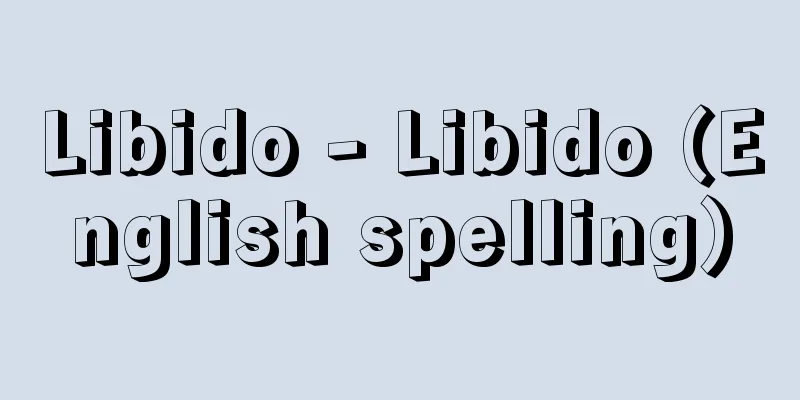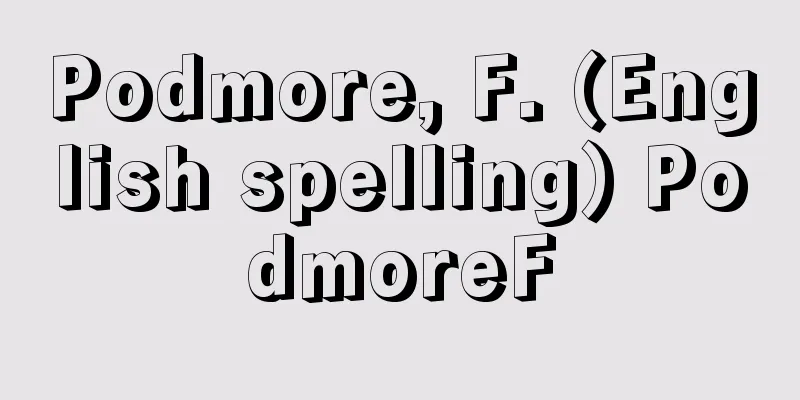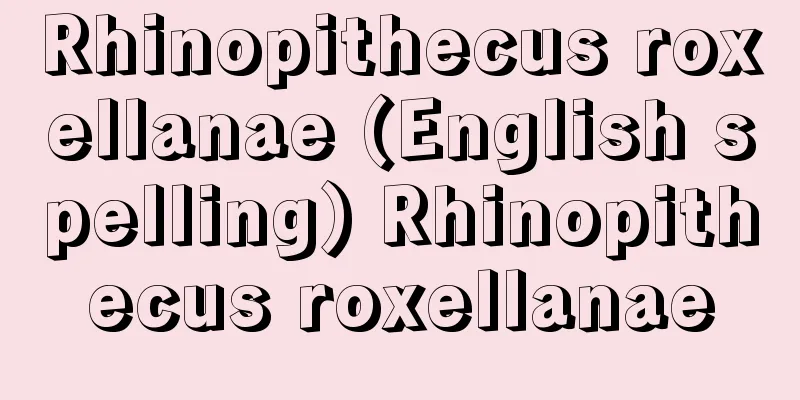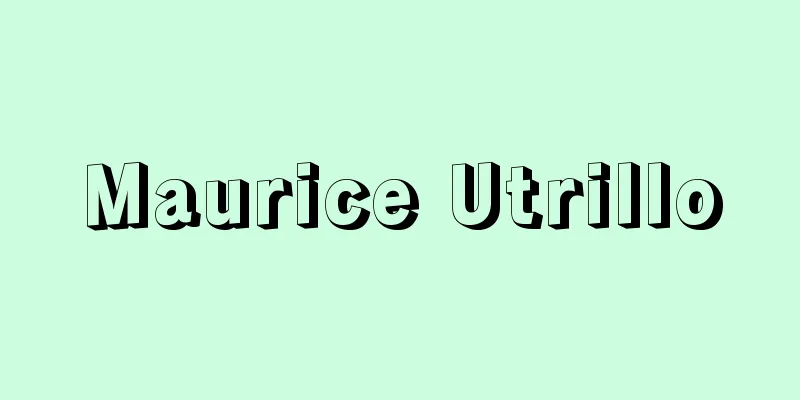Libido - Libido (English spelling)

|
A term used in psychoanalysis. Originally meaning desire or lust in Latin, Albert Moll (1862-1939) used it to mean sexual impulse (1898). S. Freud also borrowed it and used it as a psychoanalytic concept to mean the "instinctual" energy that humans are born with (1905). [Keigo Kubota] Freud's view of libidoFreud's view of instincts changed three times, and his view of libido also changed accordingly. In his early period (1905-1914), libido was used to mean sexual energy based on the sex instinct (instinct to preserve the species) in opposition to the ego instinct (instinct to preserve the self). In his middle period (1914-1920), the ego instinct was considered to be a part of the sex instinct. In other words, the sex instinct was divided into object libido (object love), which is libido directed toward objects other than the self, and ego libido (self-love (narcissism)), which is directed toward the self, and the ego instinct was considered to be a special form of the latter. In his later years (after 1920), with the First World War as a turning point, Freud proposed the death instinct in opposition to the eros instinct. This is the desire to return to the immutability of inorganic matter through death, and is also called thanatos, destrudo, or mortido. In contrast, the instinct for life (eros) is the desire for integration that creates and maintains greater unity. Freud called the energy used by the instinct for life (eros) the libido. The concept of libido is thought to have been influenced by the law of conservation of energy in physics, which developed rapidly in the 19th century. For example, when object-libido decreases, ego-libido increases. Thus, libido is characterized by being a quantitative concept. Libido, an instinctual energy, is innate to humans, but as we grow, it develops through the following stages: oral stage, anal stage, phallic stage (also called the Oedipal stage), and so on, before reaching the genital stage. Libido has erogenous zones and goals or objects of satisfaction corresponding to each of these stages, but if satisfaction is not obtained and libido builds up, it gives rise to anxiety (called pent-up anxiety). When libido remains directed toward a certain object, this is called fixation. This further causes a reversal of development, or regression. When libido is blocked from releasing its energy and accumulates in this way, it eventually leads to the formation of neurotic symptoms. [Keigo Kubota] After FreudSince Freud, the word libido has been used by many researchers, but its meaning has not been consistent. For Freud, libido had a strong sexual element. However, some people do not limit it to that, and use the word more broadly to include the meaning of mental (spiritual) energy. A representative figure in this field is Jung, who broke away from Freud and founded analytical psychology. He believed that libido is transformed by symbols, which gives rise to various mental creative activities. [Keigo Kubota] "Introduction to Psychoanalysis II" by S. Freud, translated by Katsumi Kakeda (2001, Chuokoron-Shinsha) " "Symbols of Transformation, Volumes 1 and 2" by C.G. Jung, translated by Mikiko Nomura (Chikuma Gakugei Bunko) [References] | | |Source: Shogakukan Encyclopedia Nipponica About Encyclopedia Nipponica Information | Legend |
|
精神分析の用語。もとはラテン語で欲望、欲情を意味するが、A・モルAlbert Moll(1862―1939)は性衝動という意味に用いた(1898)。また、S・フロイトはこれを借用して、人間に生得的に備わっている「本能」エネルギーという意味で、この語を精神分析の概念として使った(1905)。 [久保田圭伍] フロイトのリビドー観フロイトの本能についての考え方は3回変わるが、それに応じてリビドーの見方も変化した。初期(1905~1914)においては、リビドーは自我本能(自己保存の本能)に対立している性本能(種族保存の本能)に基づく性的エネルギーという意味で用いられた。中期(1914~1920)になると、自我本能は性本能の一部とみなされた。つまり性本能は、リビドーが自己以外の対象に向けられた対象リビドー(対象愛)と自己に向けられた自我リビドー(自己愛(ナルシシズム))とに分けられ、自我本能は後者の特殊な形態と考えられた。晩年(1920年以降)、第一次世界大戦を契機として、フロイトは生の本能eros instinctに対立するものとして、死の本能death instinctを提唱した。これは、死によって無機物の不変性に回帰しようとする欲求であり、タナトスthanatosあるいはデストルドーdestrudoとかモルティドーmortidoともよばれている。これに対し生(エロス)の本能は、より大きな統一を生み出し、それを維持しようとする統合の欲求である。フロイトは、この生(エロス)の本能によって用いられるエネルギーをリビドーとよんだのである。 リビドーという概念は、19世紀に急速に発達した物理学のエネルギー保存の法則の影響を受けたと考えられる。たとえば、対象リビドーが減少すると、自我リビドーが増大するというように。このようにリビドーは量的な概念であるというところにその特徴がある。 本能エネルギーとしてのリビドーは、人間に生得的に備わっているが、人間の成長とともに次のような段階を経て発達する。口唇期、肛門(こうもん)期、男根期(エディプス期ともいう)などを経て性器期に至る。リビドーはこれらの各段階に対応した性感帯と充足の目標あるいは対象をもつが、充足が得られず、リビドーが鬱積(うっせき)すると不安を生み出す(鬱積不安という)。また、リビドーがある対象に向けられたままの状態にとどまっているとき、それを固着とよぶ。これはさらに発達の逆戻り、すなわち退行を引き起こす。このように、リビドーがそのエネルギーの放出する道を断たれて蓄積されていくと、やがて神経症の症状形成がなされることになる。 [久保田圭伍] フロイト以後フロイト以後、リビドーということばは多数の研究者によって用いられたが、その意味するところは一定しているわけではない。フロイトの場合、リビドーは性的要素が濃厚であった。しかしそれだけに限定せずに、広く心的(精神的)エネルギーの意味をも含めてこの語を用いる人たちもいる。フロイトから決別して分析心理学を創始したユングはその代表的人物で、彼はリビドーが象徴(シンボル)によって変容し、それによって種々の精神的な創造活動が生じると考えた。 [久保田圭伍] 『S・フロイト著、懸田克躬訳『精神分析学入門Ⅱ』(2001・中央公論新社)』▽『C・G・ユング著、野村美紀子訳『変容の象徴』上下(ちくま学芸文庫)』 [参照項目] | | |出典 小学館 日本大百科全書(ニッポニカ)日本大百科全書(ニッポニカ)について 情報 | 凡例 |
<<: Code of Lipit Ishtar - Code of Lipit Ishtar
>>: Lichtenberg figures - Lichtenberg figures
Recommend
Men's dance - Otokomai
〘Noun〙① A dance performed by women dressed as men ...
Iritsuke - Fried food
…These customers are often fixed for each peddler...
Tree of Jesse - Essai no Ki
…From Noah, the father, grow two trunks, Shem and...
Pseudopyxis
...A soft perennial plant of the Rubiaceae family...
Fang Yizhi - Hoichi
1611‐71 A Chinese thinker in the late Ming and ear...
Densuke gambling - Densuke gambling
This is a type of cheating gambling that is playe...
Kanze Nagatoshi
A Noh actor and Noh playwright from the late Muro...
Oroshinorui - Oroshinorui
...A tegumi (hand technique) performed to move fr...
Hannah Riddell
A British female missionary, she was a pioneer in...
Americano-Liberian
… [Nobuyuki Hashimoto] [Residents, Society] 90% o...
Downy mildew - Downy mildew
This disease of crops is caused by the parasitism...
Jacques-Henri Lartigue
French photographer and painter. Born in Courbevo...
Intendencia (English spelling)
A system introduced by the Spanish Bourbon dynasty...
Smelting - Refining
Smelting is the process of extracting the desired...
Treaty - treaty
meaning It refers to an international agreement b...









